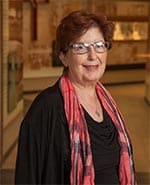If your day begins or ends trying to maneuver the lid off a child-proof cap, you are most likely taking one of the 5.8 billion prescriptions filled last year. For some of us, we wrangle with several of those bottles every day plus vitamins and supplements we hope will improve our health. It is not unusual for those with chronic health issues to take as many as 12 to 15 prescriptions a day.
Each year, more than a million people, including an estimated 75,000 children, end up in hospital emergency departments because of unintentional medication poisonings, according to the Centers for Disease Control and Prevention.
Many of these adverse drug events are preventable through patient education, which is what Methodist Generations provides its older adult members in association with the Methodist Health System pharmacists.
While medications can improve our health and treat diseases, there are consequences when they are not used correctly. Pharmacists Kristin Lutek, PharmD, and An Nguyen, PharmD, at Methodist Charlton Medical Center, explain the importance of taking medication safely.
A simple reminder
A good place to start is remembering to take your medicine. Make use of reminder features on your smartphone or electronic personal assistant. If those don’t work, try posting notes in places you can’t miss.
Picking the right spot
Lutek and Nguyen recommend putting your medication in a location where you do other things, like the dining room table or your bedside table.
Avoid storing your medications in the bathroom as the heat and humidity can have an adverse effect. Find a cool, dry place for storage, and if you have children in the house, put the medication up high enough so they can’t reach it.
Full disclosure
Keeping your doctor in the loop about what drugs and supplements you’re taking is also critical, Lutek says.
“When you go to the doctor, make sure you have a complete list of all medications you take, including all over-the-counter, vitamins and supplements, as well as any drug or food allergies,” she says. “Your doctor also needs to know if you drink alcohol, tea, coffee or sodas, as well as what type of lifestyle you have, active or sedentary, and if you smoke.”
Templates are available online to make a list of all medications and supplements you take. Include the name of the doctor who prescribed the medication, what condition it treats, the dosage, and the start and end dates of that prescription. Carry this list with you as either a hard copy or a photo saved to your phone. This list should be updated each time a prescription is changed or added.
Things change
The dosage for medications can change with age and weight. For children, be sure to check their weight to administer the correct amount. Older adults should consult the American Geriatric Society’s BEERS criteria, a list of medications that are potentially inappropriate for them, Nguyen says.
“If you are older and currently taking any of the medications listed, talk with your doctor on the possibility of changing to another medication,” Nguyen says. “The benefits may outweigh the risks, but only your doctor can tell you for sure.”
Read how our Medication Therapy Management clinics help patients access lifesaving medications.
About the author
 Jerri Locke is the Director of Healthy Aging for Methodist Health System. She directs a membership program, Methodist Generations for adults who are at least 55 years of age. She is driven to provide quality programs to help older adults maintain a healthy life. Jerri has a Bachelor’s in Education from Abilene Christian University, as well as a Master’s in Rehabilitation Counseling from the University of North Texas and a Master’s in Human Relations and Business from Amberton University. She was born and raised in Oak Cliff and values the diversity, the history, and the community it provides. She’s a mom of two young adults, foster mom to a variety of rescue dogs, and part-time caregiver for her father.
Jerri Locke is the Director of Healthy Aging for Methodist Health System. She directs a membership program, Methodist Generations for adults who are at least 55 years of age. She is driven to provide quality programs to help older adults maintain a healthy life. Jerri has a Bachelor’s in Education from Abilene Christian University, as well as a Master’s in Rehabilitation Counseling from the University of North Texas and a Master’s in Human Relations and Business from Amberton University. She was born and raised in Oak Cliff and values the diversity, the history, and the community it provides. She’s a mom of two young adults, foster mom to a variety of rescue dogs, and part-time caregiver for her father.

